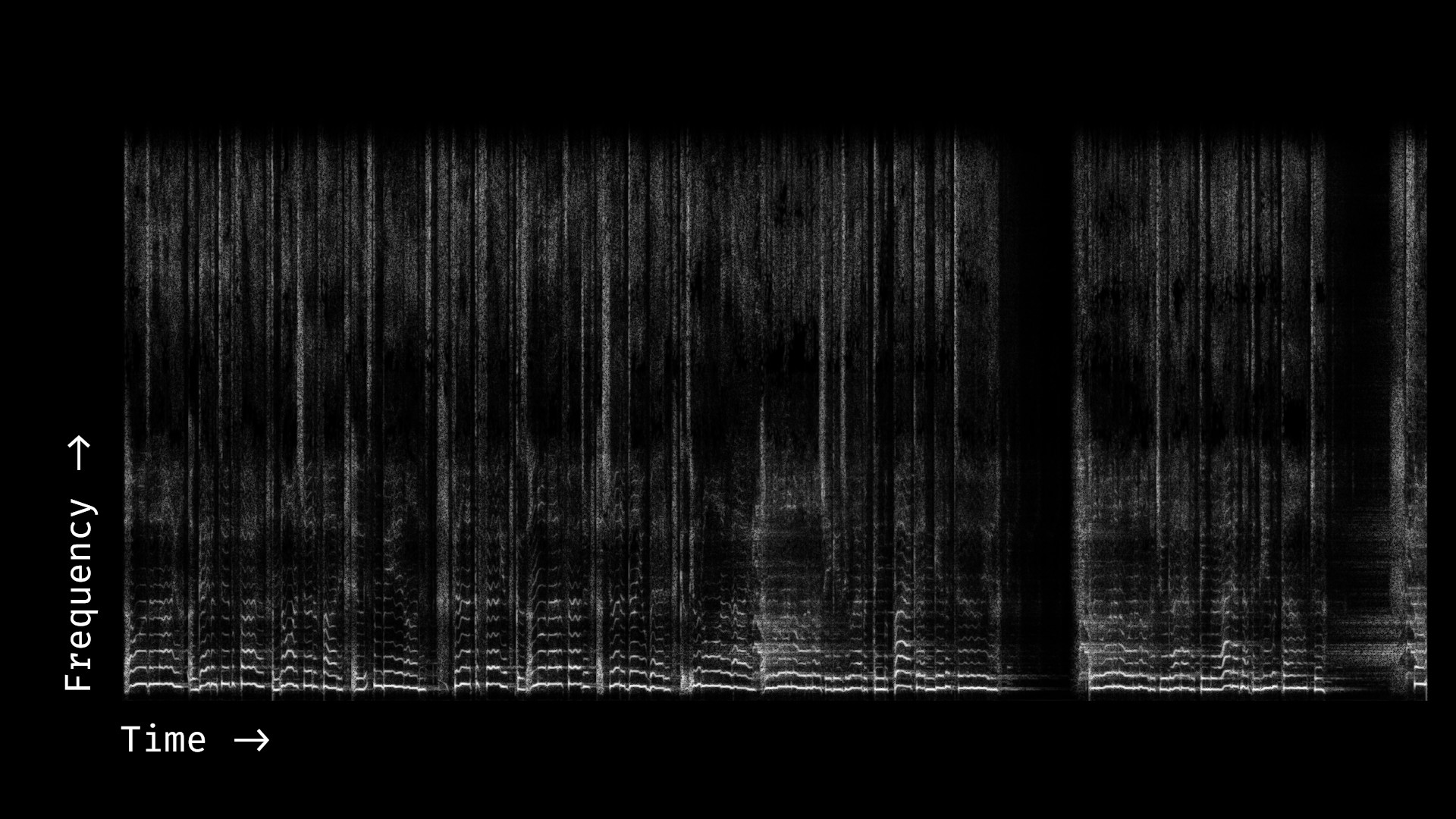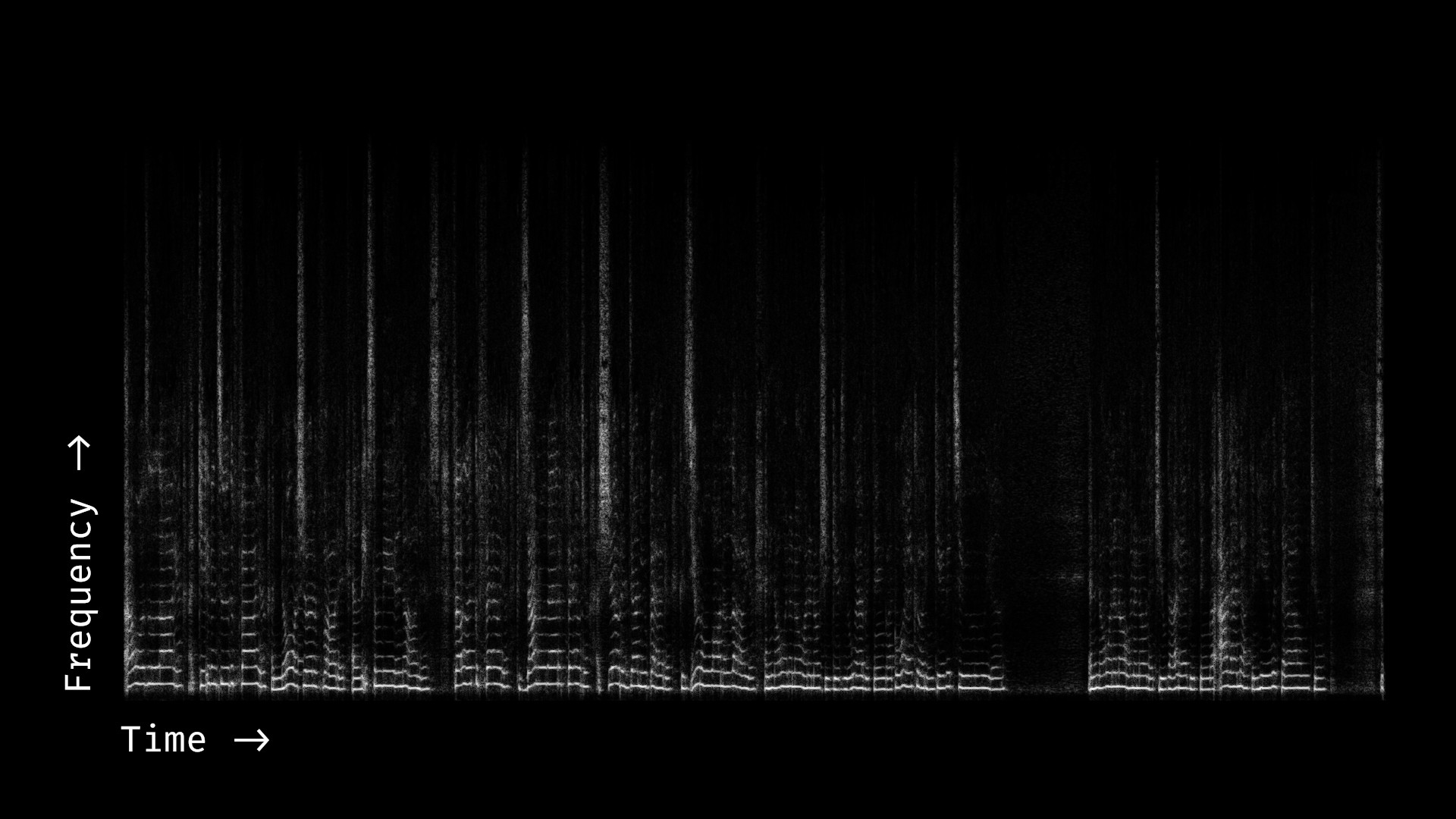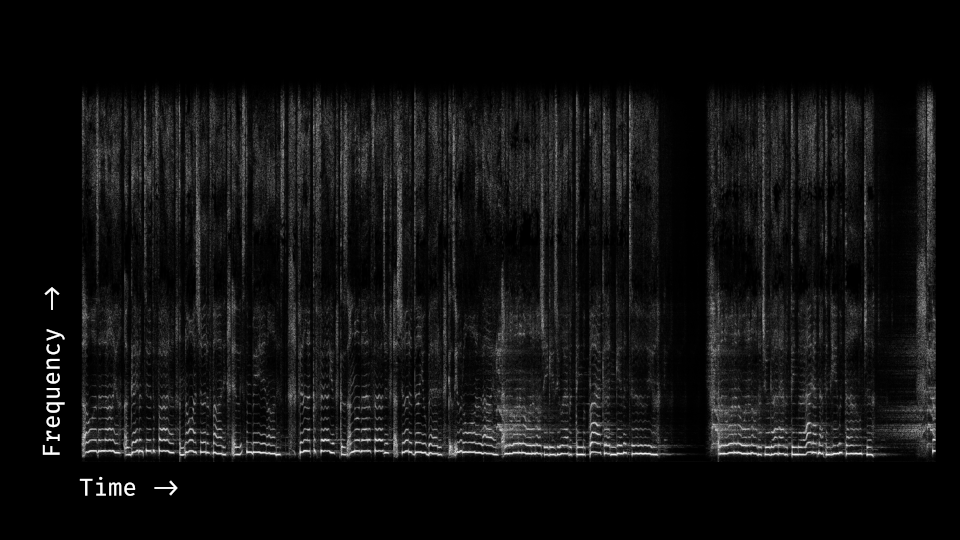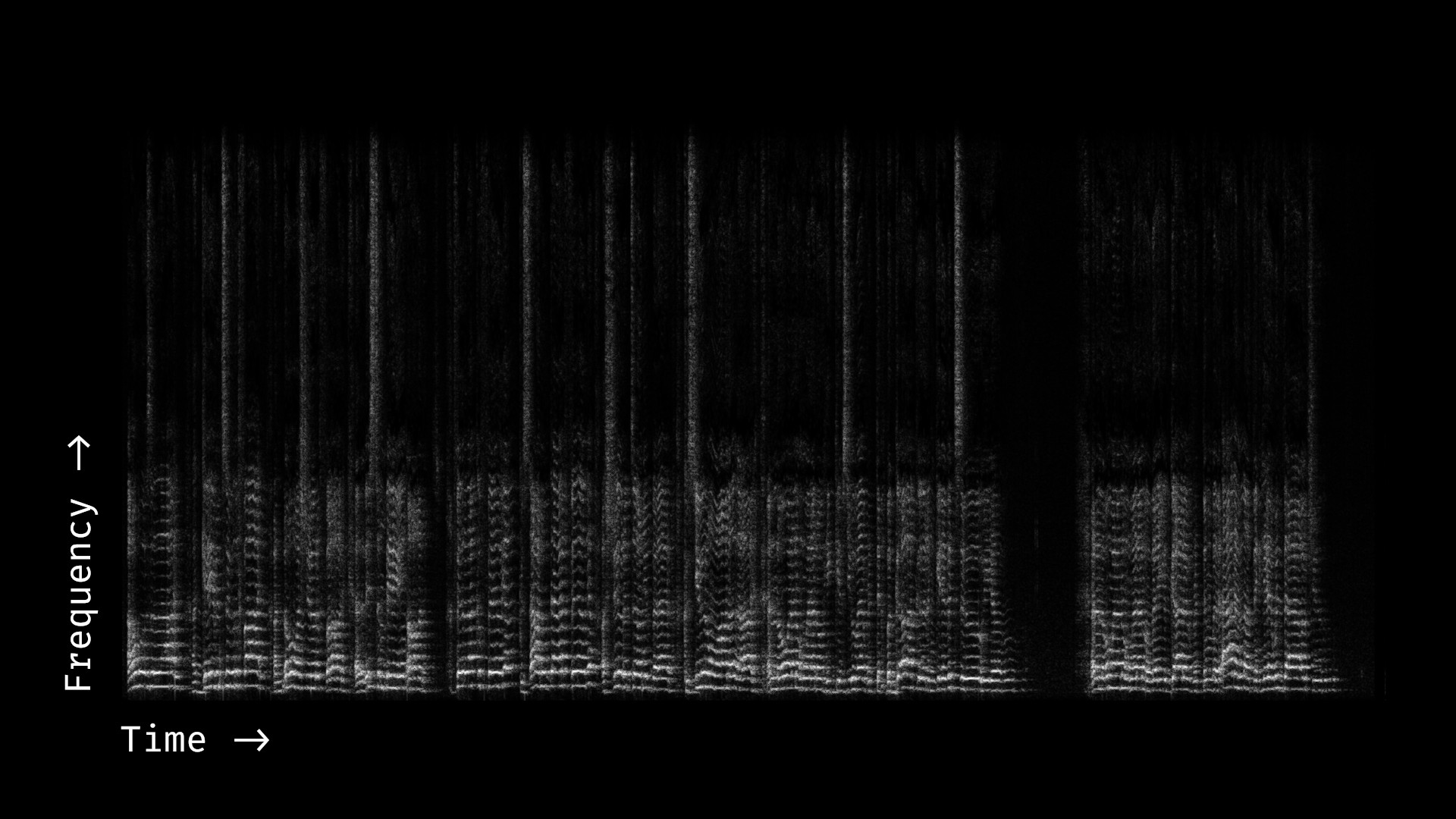- Week 5-7:
- Fixes to current pipeline
- [ollin] There's probably a bug or two in the harmonic reweighting version of sst.py right now, the output sounds worse than patch matching even though my testing code shows that harmonic reweighting should sound great. EDIT: Fixed now, I was 1) not pitch normalizing correctly in the harmonic feature computation and 2) reweighting the original content instead of the super-resolution content
- [andrew / joseph] Figure out why DeepSpeech features are incorrectly sized and how to properly correct for this, rather than just blindly rescaling the features bilinearly :P - EDIT: Turns out we're doing this correctly! The only difference is our FFT window sizes–we're using 1536 samples, but DS is using 0.02s ~= 1765 samples. The DS network produces features of the same size as the input, so we just need to stretch the time axis.
- [andrew / joseph] Clean up DeepSpeech feature-retrieval code to be faster and less hacky (shouldn't need to write to temp files, shouldn't need to have python calling a shell script calling python, should ideally be able to batch multiple inputs)
- [ollin] Implement multi-scale refinement for PatchMatch and see if it makes stuff work better.
- [??] Test if using pitch-normalized inputs improves DS feature matching results, and, if so, switch to doing that. EDIT: It doesn't seem to substantially improve it, although it also doesn't hurt–it's hard to say conclusively.
- [ollin] Make PatchMatch faster if possible, right now it takes too long with high iteration counts (~20).
- [All] Implement initial draft of post-processing networks (see notes/post_processing_net.md in the repo)
- [josephz/andrew] Implement model architecture in Keras.
- Assume that the data is already in
x/0001.npy,y/0001.npy - The input is just a multi-channel spectrogram, the output is a spectrogram.
- For now, you can just load the data from images for our one example, and make sure it can overfit.
- [josephz/andrew]: Overfit to our
rolling_in_the_deep.mp3song
- [josephz/andrew]: Overfit to our
- Assume that the data is already in
- [ollin] Implement training data generator, saves
x/0001.npyspectrogram andy/0001.npyto numpy files.- [??] Make two versions: one pre-tiled, the other not
- The idea is to make it such that the non-tiled emulates our end to end pipeline
- [??] Make two versions: one pre-tiled, the other not
- [josephz/andrew] Implement model architecture in Keras.
- [??] Test the primary source of PatchMatch error by comparing the MSE in feature space between our PatchMatch reconstruction and an n^2 nearest-neighbor search. EDIT: based on testing with higher iteration counts, I think feature quality is the main issue.
- Test Neural Net Improvements: this is all in
post_processor.pyand you run it withtrain.sh- Try a deeper network (more downscaling) - low tier difficulty
- Make the network train faster or be not bad
- Add in style images somehow - possibly with a separate encoder - but this requires modifying the data generator slightly. - mid tier difficulty
- Test alternate featurizer:
- The one in https://github.com/andabi/deep-voice-conversion looks good
- Installlllllll itttttt
- Actually write the code to use it for featurization!
- Compare results with DeepSpeech results.
- Fixes to current pipeline
- Week 7-9:
- Best-case: work on the demo, make a pretty web interface, speedup
- Worst-case: focus on dataset, and do a more rigorous comparison of existing methods, including notes for how they can be improved.
Things we should probably answer to understand the problem better
- What does the phase look like in a spectrogram? Is it easy-to-predict, or is it random?
Things noticed while comparing aligned spectrograms. A successful style transfer algorithm should probably transfer most of these.
- High frequency detail is different (for different styles, there may be a lot of high-frequency information present, or it may be lost; we should recover it)
- Global spectral envelopes are different (for different styles, different frequency ranges will, on average, be brighter or darker; we should match it)
- Amplitude of speech components are different (for different styles, sibilants/vowels/breathing will have different relative loudness; we should match them)
- Low-level details are different (for different styles, reverb and vibrato will be more or less present)
The goal of this project is to develop a plausible algorithm for style transfer on audio files containing monophonic singing ("acapellas").
This is analogous to the (well-covered) field of image style transfer. The algorithm should take in a style file from the target singer and a content file which should be sung in the target's style.
Efforts to implement audio style transfer (and singing style transfer, specifically) have thus far been unsuccessful or moderately successful. The primary qualitative criteria for judging the output are:
- Intelligibility: are the non-stylistic features of the content audio (pitch, timing, vowel / consonant sounds) preserved?
- Plausibility: is the output file plausibly produced by the target singer (i.e. are the stylistic features transferred)?
Existing efforts usually perform poorly along one or both of these axes.
One potential obstacle to success in this task is an insufficiently clear definition of how style arises in singing audio. If we don't have a meaningful notion of style, then an algorithm that perfectly captures this non-meaningful notion will still produce output that fail our judging criteria.
So, let's look at some examples and try to figure out where the style is coming from.
Audio is time-varying pressure (a single, highly self-similar amplitude that varies with time). Spectrograms are the result of performing a Fourier transform on that signal, and represent the amplitude and phase of a range of frequencies within the audio. We will ignore the phase (for now) and just show amplitude.
The following is the first few seconds of an amplitude spectrogram for the first 30 seconds of the isolated vocal (acapella) for Ariana Grande's "One Last Time":
You can reproduce this figure with python code/conversion.py examples/one_last_time_original_30s.mp3 (though the y axis will be flipped). You can also open the mp3 in the Audacity spectrogram view for an interactive spectrogram.
Some things to note:
- The audio is a mixture of sibilants (vertical lines, corresponding to sounds like the "s" in "was" or the "c" in "because") and vowel sounds (horizontal stacks of lines, corresponding to sounds like the "a" in "gave").
- The harmonics of each vowel sound are linearly spaced by the fundamental (lower-most) frequency, and follow the same pitch contour as the fundamental.
- Each sound (vowel or sibilant) has its own distribution of frequencies; the distribution of harmonics/overtones shifts for different sounds (e.g. different vowels)
- The vocal is heavily processed–there is smearing (reverb) and there are occasionally backing sounds (e.g. shouts).
It's worthwhile to listen through the vocal a view times (possible slowed down) to convince yourself that the sound you hear and the spectrogram are representing the same information.
Now, to understand which parts of the track are "style" and which parts are "content", we can see a different (less professional) singer sing the same content (I've pulled this from YouTube; you can/should download audio using youtube-dl).
(Note that I've aligned, pitch-corrected, and applied a dynamics compressor here to make the songs more comparable, so some of the basic "style" is already transferred).
You can reproduce this figure with python code/conversion.py examples/one_last_time_cover_aligned_30s.mp3 (though the y axis will be flipped). The original audio is at one_last_time_cover_30s.mp3.
Here's a gif comparison (you can also open each image in a separate tab and flip between them):
Some notes:
- The cover is missing a lot of high frequency detail. This is probably the result of a low-quality mic (and, to some extent, YouTube compression).
- The cover is also weighting harmonics differently. Some harmonics that are present in the original are lost in the cover, and others are emphasized more.
- The cover is missing reverb but has occasional room noise.
- The relative amplitude of different parts of the audio is different. For example, intakes of breath are super loud in the original audio but almost inaudible in the cover.
- Although the melodies are the same, the precise vocalization is different. For example, there are parts where the original vocal has vibrato (wavering pitch) but the cover does not.
A perfect style transfer approach would correct all of these. In practice, we may only be able to fix some of them.
Here's another example (aligned, from a male vocalist):
Notes:
- This one is three semitones down (the vocalist is singing in a lower key), but this isn't an important stylistic component
- This audio includes room reverb (smudging) that is different from the other two examples.
- The frequency weighting is, again, different
The majority of techniques attempted so far (see the project proposal) use a single-stage, end-to-end pipeline. Although we can try this, I think it's more interesting to decompose the problem and try to get incremental results that are all intelligible (since they perform minor modifications) and plausible along some axis (e.g. they transfer some aspect of the style), along with (possibly) some end-to-end post-processing stage that attempts to reduce artifacts in the final audio file. If (by some miracle) we can build a successful decomposed pipeline, it's potentially possible to turn this into an end-to-end solution by building a big neural net with lots of auxiliary losses.
I've listed some possible components below:
- Pitch envelope extraction (we can use a pre-trained network like https://github.com/marl/crepe), e.g.:
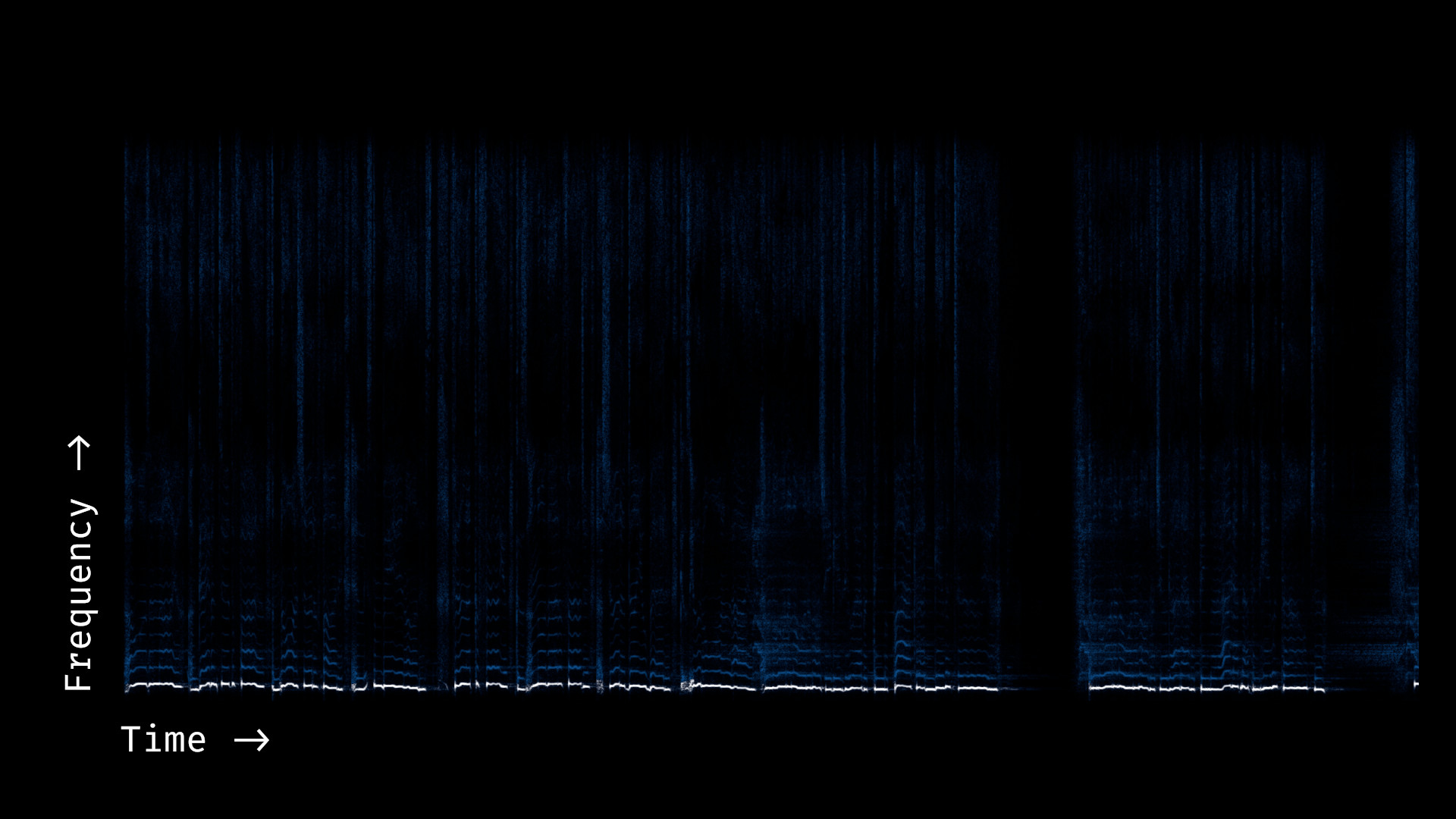
- Sibilant vs. vowel segmentation (we can do this manually given the pitch envelope by just masking everything to harmonics of the pitch), e.g.:
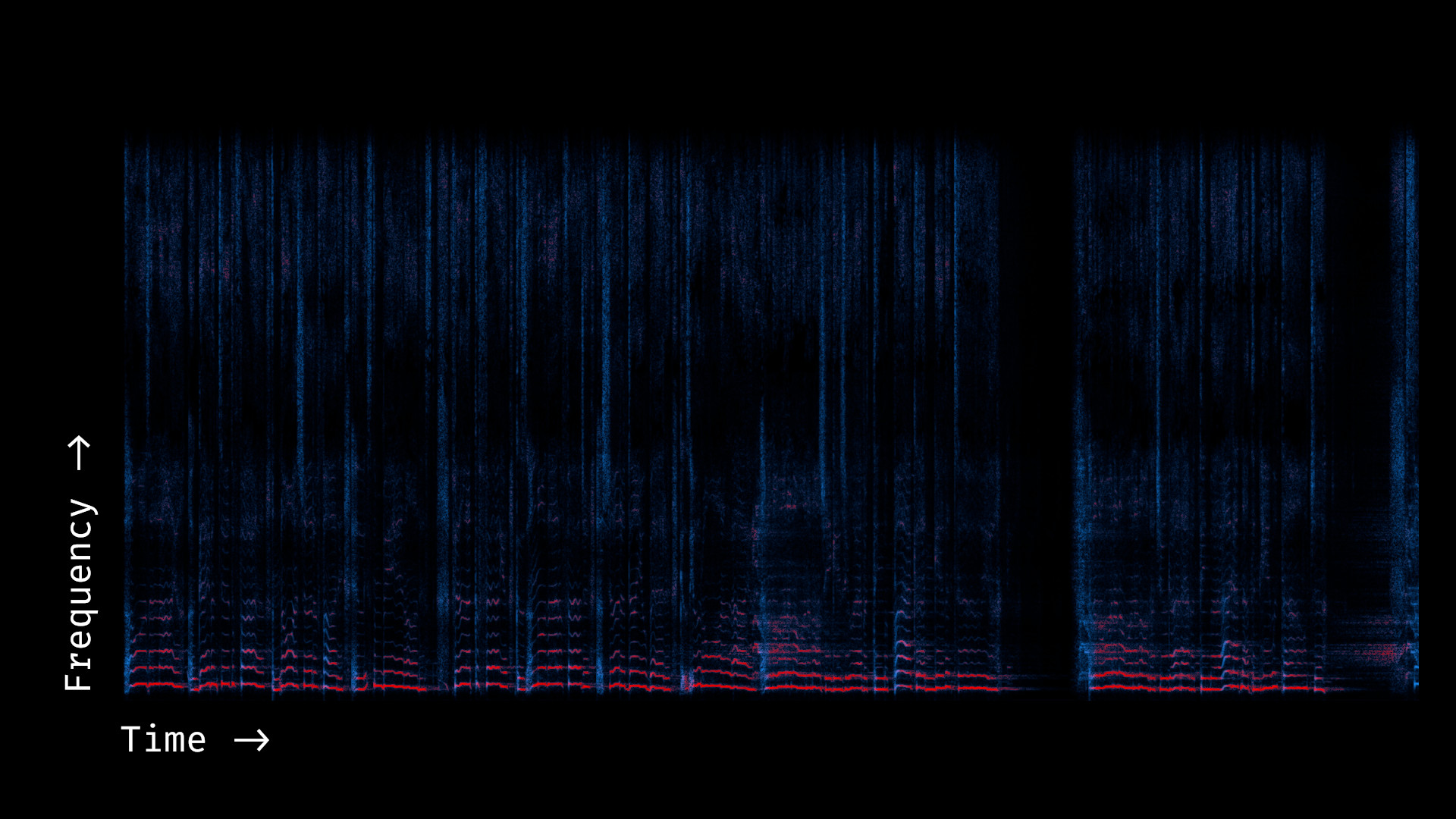
- Creating a "super-resolution" version of the content's vowel sounds (this can be done by taking the pitch envelope for the fundamental and duplicating/warping it into the higher octaves, as if the singer was a perfect saw wave); note that this example is just a mockup (it does nearest-neighbor scaling); an actual implementation should probably do curve fitting + antialiased drawing to get sharp, smoothly-transitioning higher harmonics
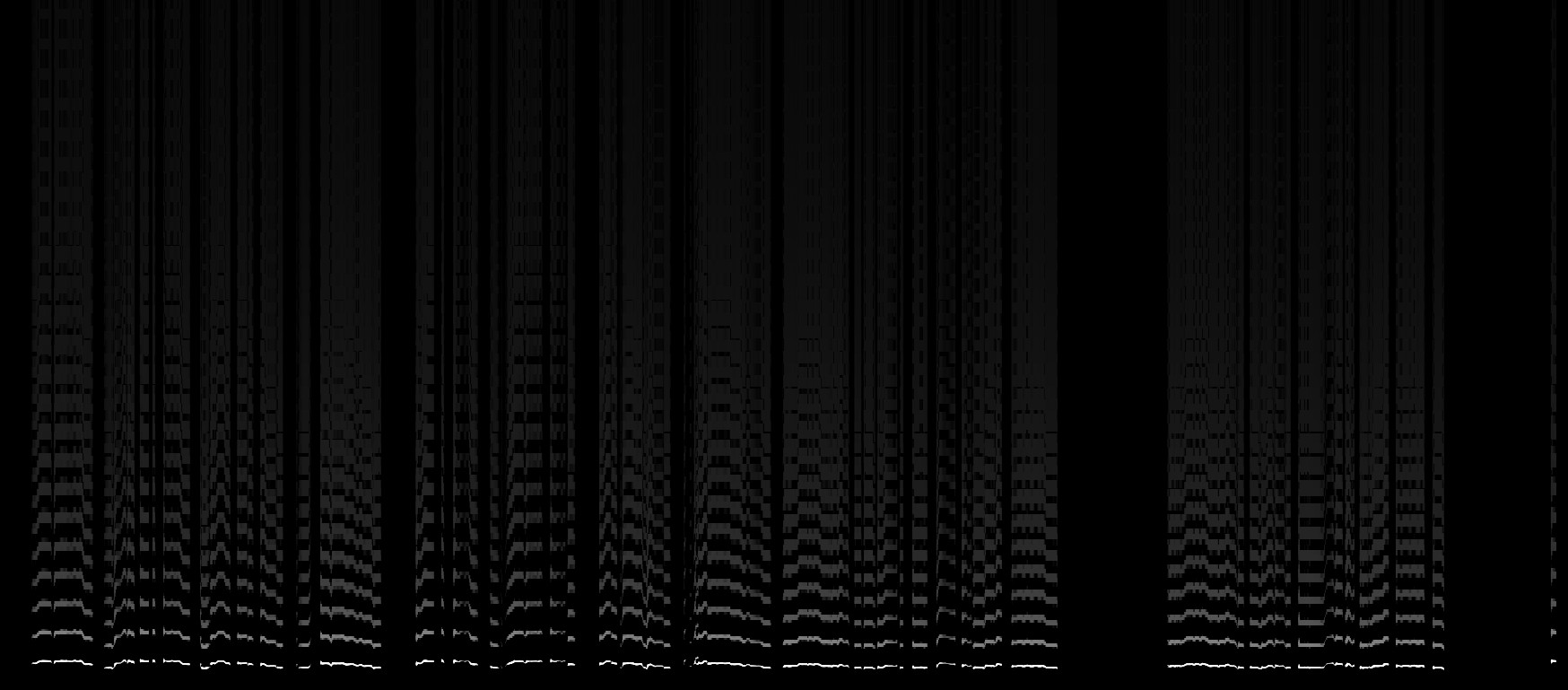
- Creating a "super-resolution" version of the content's sibilant sounds (this can be done by extending/stretching the higher frequencies upwards and taking a maximum with the original sibilant sounds)
- Global EQ matching (this may require layering in the super-resolved versions if the original signal is too quiet)
- Some sort of loudness/dynamics matching over time (conditioned on their frequency distribution). I'm not sure how to actually do this one in a reasonable way yet without some sort of ugly nearest neighbor lookup...
- local patch matching (using e.g. PatchMatch or some form neural style transfer) to match small details in the spectrogram like vibrato and reverb. This should maybe actually be the first step
- Using amplitude-only spectrograms is a bad idea due to the resulting artifacts, we should figure out how to preserve phase or generate it using a postprocessing network.
